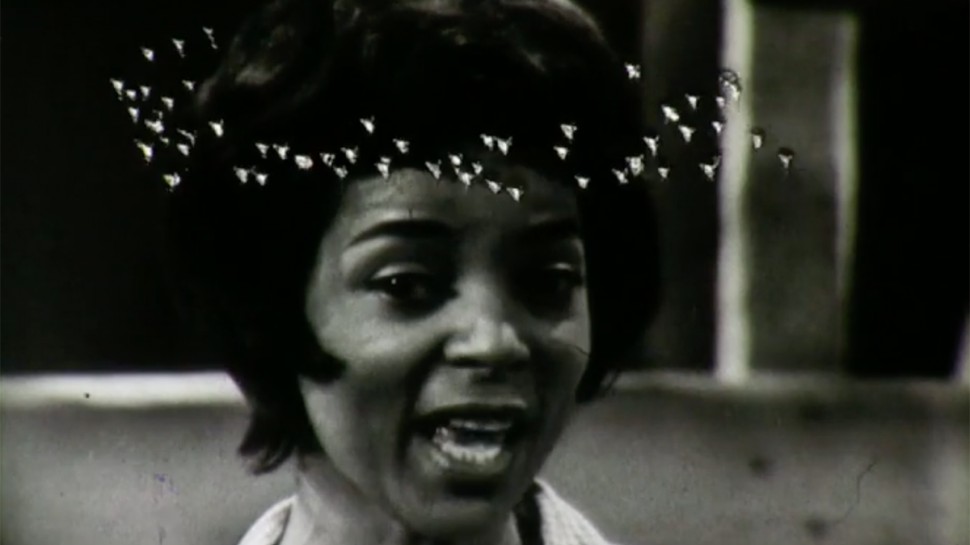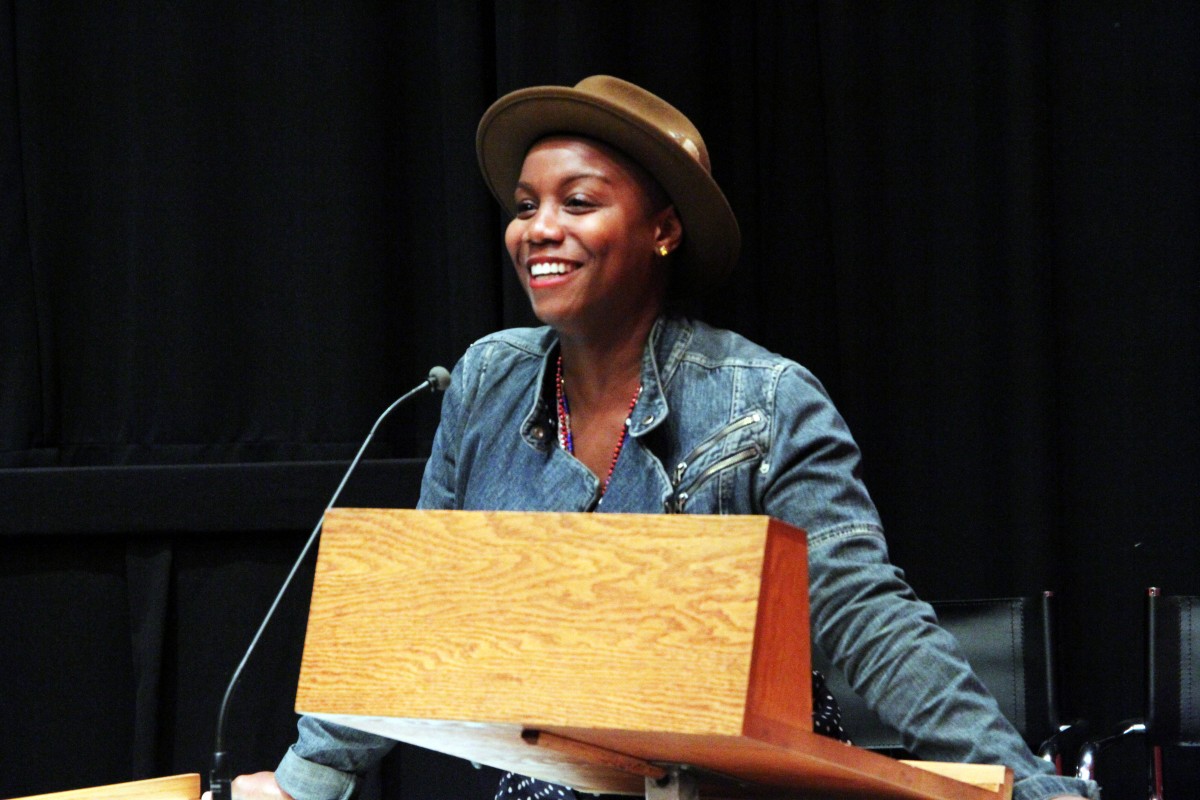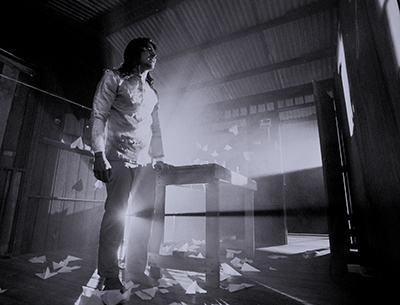Audio transcription
Haden Guest 0:01
Good evening ladies and gentlemen. My name is Haden Guest. I'm Director of the Harvard Film Archive. I'm really happy to be here for this very special screening of West Indies together with two films by Ja’Tovia Gary. Abid Mohamed Medoun Hondo—better known as Med Hondo—was one of the great pioneers and visionaries of the African cinema. He died just last month at the age of 82. After his departure, sadly very little attention was given. A sad reminder of how terribly limited is the current understanding of film history and African cinema in particular. Throughout his long career, Hondo dedicated himself to chronicling and exploring chapters of African cinema and the African experience underrepresented in cinema and misunderstood in general, contested and repressed histories of struggle of racism and imperialism, of resistance—and in cinema—of the urgent fight for artistic freedom.
Tonight's film is among Hondo's finest, an uncompromising masterwork that is also a milestone in African film history. Considered the first African musical West Indies, whose full title is West Indies ou les nègres marrons de la liberté or West Indies: The Black Freedom Fighters, also cuts against the grain of the Hollywood mode of musical both in its tone and its subject, set principally on an elaborately constructed slave ship. The 1979 film was also one of the most expensive African films to date, and was a saga production that took a full seven years to realize.
For too long Med Hondo's films have remained extremely difficult to see in any form, and the Harvard Film Archive has been playing an important role in helping to change this unfortunate situation. The HFA has an important collection of Hondo's films acquired from Hondo himself after his visit in 2000 as one of the first of the McMillan-Stewart fellows. And we are working now with the Hondo estate and such organizations as Cineteca di Bologna to preserve Hondo’s films, and we'll be presenting a complete retrospective of his work—the first in the US—next spring.
I'm really thrilled that we have with us tonight to present West Indies—as well as two of her own films—Ja’Tovia Gary, who is a 2019-2020 Radcliffe-Film Study Center fellow. As a filmmaker, Miss Gary is poised at the start of what promises to be an important career as demonstrated by the two powerful short films that will open tonight's program: An Ecstatic Experience from 2015 and Giverny I (Négresse Impériale). I was really struck by An Ecstatic Experience when I saw it for the first time and saw it quite recently at the David Zwirner Gallery. I was struck by its channeling and reinvention of experimental film techniques, by its quiet and righteous anger. And I was so happy to see this film yet again, together with Giverny I during Miss Gary’s wonderful Radcliffe lecture earlier this spring. I know some of you were there as well. I want to give special welcome to all of the Radcliffe fellows who are here tonight. And I also want to thank the Film Study Center and the Radcliffe Institute for Advanced Studies for co-sponsoring tonight's program. Each of these short films is six minutes long. They'll play back-to-back followed immediately by West Indies. And now I'll ask you to please turn off any cell phones, any electronic devices you have. Please refrain from using them. And with no further ado, please join me in welcoming Ja’Tovia Gary.
[APPLAUSE]
Ja’Tovia Gary 3:50
Hello, everyone. Thank you so much for coming out. Thank you, Haden Guest. I'm really excited to be here to present these works with you all. Most importantly, I'm excited to have them in conversation with Med Hondo’s West Indies, which I saw for the first time a couple of months ago in this very theater. I was introduced to hunters work maybe about two years ago when I saw Soleil O and I was really, really taken with his command of form and how he basically disrupted traditional conventions around narrative. And this really put me in the mind of my own work. So I'm really interested to see how these works speak to one another. And if you guys are up for it, we can talk after. If you're not, then that's fine. I'll come up here and stand and if you want to shoot questions at me, then I'll answer them and we can have a conversation. It can be a quick one, it can be a medium-sized one, whatever you want. I do understand it's raining tonight. So we'll play it by ear, but I will be here if you want to have some sort of dialogue. Anyway, I won't go on and on and on. I'll just say thank you again for coming. And we can start the films.
[APPLAUSE]
-------------------------------------------------------
Ja’Tovia Gary 5:13
[INITIAL AUDIO MISSING] ...chose to have this work in conversation with my own. And then we can open it up for very brief questions and then we can all leave and go have wine or whatever we're doing, whatever I'm doing.
So I am really moved by this film, particularly because, well, maybe I'll just give a little background biographical information. I have a background in theatrical performance, stage performance. So this idea of a kind of musical that is incendiary is really fascinating to me. I'm really also drawn by this mise en scene that is presented on screen, so we have this kind of slave ship on which all of the action is taking place. And it changes, it moves and becomes a kind of colonial administrative space. We slip back in time and we're seeing this period of enslavement. So I think this is a really fascinating way to engage theatricality and performance to really consider history, and to think about these efforts of insurrection, these efforts against colonial rule.
One of the really fascinating things about the film to me is that it's not simply an indictment of you know, white supremacy and colonization and imperialism and capitalism, but also an indictment of this Black bourgeoisie class, this petit bourgeoisie, these folks who are members of the community in a way but who also very much aligned with colonial power and how they're oftentimes really effective agents in suppressing, quote/unquote, power and progress. So to me that's something that I think about quite often in my work, ways to really think about the community or even myself: how can I render myself complicit? Like, I feel like Giverny I is actually a self-drag in many ways. You know, I was in this really beautiful bucolic garden, and I was having some difficulty there because I come from this working-class family, and so what does it mean now to have access and proximity to money, to power and to whiteness in ways that I had not in the past? So I'm thinking about all of these things. I'm really fascinated by power. And I guess shining a light on power that is concealed, right? How to unearth or unveil concealed power. So that's, you know, a little bit... I won't drone on and on and on. If anyone has any questions, I can quickly answer them because it's mad late; we don't have to stay here forever.
Any questions?
Yes. There's a mic, apparently.
Audience 1 8:28
Interesting pairing of your two films with the Med Hondo. I had a question. I think I read in an interview that you gave about your use of techniques from the white experimental avant garde, especially in the first with this touching on the film and painting on the film and that kind of thing. So I'm just wondering if you could say a little bit more about your use of those… references.
Ja’Tovia Gary 8:53
Yeah, these guys Stan Brakhage, Len Lye, I mean, there's tons of these folks, right? From the 1950s, 40s, who were engaging with the material of the film directly. So direct animation techniques like scratching directly onto the film, painting on the film, masking out various parts of the emulsion or the entirety of the emulsion. To me,it was really fascinating to learn about this. I went to film school, but I was not taught a lot of experimental techniques. That was not on the curriculum, so I had to kind of venture outside and take workshops on my own. So yes, I'm really fascinated by this way of—I mean, I think what I'm doing that's different from these guys, is that, for me, it's not simply about manipulating the materials. It's about putting the manipulated material in conversation with contemporary imagery. Also with imagery that I have captured myself. How can I have this conversation across time by employing the archive, by engaging the archive? So it's not just about making these kind of formalist statements that I feel like a lot of these guys are interested in. It's also about, how can I say something? How can I have a handle on the form, but also speak to whatever is happening currently around me or in my life? Whether this be political, or personal, which are oftentimes deeply intertwined. So yes, I am taking a page from these folks. I feel like it's a kind of appropriation in many ways. Of reclamation in many ways, that uses these avant garde techniques, but it's very much in line with the Black experimental impulse. These ideas are moving against traditional narrative forms or conventions that we see in Hollywood. So I am thinking about Brakhage, but I'm also thinking about Ben Caldwell, or Madeline Anderson, right? These Black folks who were making these interventions in nonfiction film as well.
But yeah, to me, it's about care. There's a Black feminist. Her name is Saidiya Hartman. And she talks about care as this antidote to violence. So for me spending so much time in the archive, and spending so much time with the actual material feels like an act of care very much. So I'm going back over and over and over in the image and examining not just what's happening within the context of the frame, but also how can I respond to this? How can I be in conversation with the material itself, but also what's happening on the film? Thank you for your question.
That was a long-ass answer. Any other questions?
Yes.
Audience 2 12:13
If you're comfortable with this, what do you think of the complicity question now?
Ja’Tovia Gary
Sorry?
Audience 2
What do you think of the complicity question now? You said when you entered the garden...
Ja’Tovia Gary XX:XX
What do I think about complicity? I mean, it’s difficult. It’s rough. I’ve been having conversations with my friend—I have a friend Alexandra Bell back there. She's here with the Vision and Justice conference. She's also going to be in the Whitney Biennial. (I'm putting you on blast right now!) But yeah, we have these conversations about the Whitney often, because I have a really interesting relationship with the Whitney too—and not just to make this about the Whitney. I think it's about institutions in general. I find institutions—funnily enough here at Harvard—I find institutions to be inherently violent, but my relationship with them is one of like a parasite, like, I'm the parasite, and they are the host. So how can I leverage my position within this institution to…? And I feel like this is something I should probably not be saying to ya’ll. [LAUGHS] Like, I should just write this in my journal. But how can I leverage my position within the institution to make moves that I feel like are incendiary? To reach young people like yourself—I feel like I've met you before at my open studio—and young people like my research assistants, Keturah and Che, and other like-minded folks who are interested in having these conversations, who are interested in organizing around incendiary media, emancipatory media, but it's like a catch-22 right? I definitely feel like– Chris Rock said it best; he was like “To be Black in America is like having the uncle who pays your way to college also molest you.” That sounds really fucked up. But like that is the dichotomy, right? Like, here I am suffering from this teat that is also choking me. So I know that's really intense visual imagery, but this is how I feel. This is what I feel like often when I'm engaging with institutions such as this, but also institutions that are within the art world. And Hollywood itself, right?
So I want to continue to make my work. But I feel like the more and more I make it, the more and more incendiary it becomes because it's not light and sweet. Even if I make a musical, I feel like it'll be like that. Even if I make a romantic drama, it’ll be insurgent in some way. I feel like the more and more the work continues... I wonder about its place within the market. So that's my answer. I don't really have an answer to a massive question mark. I feel like the work that I'm doing and being as open and clear and authentic as possible, this is helpful for me. Knowing that I'm not shucking and jiving up here to get you to like me. Knowing that I'm not lying about who I am and what the work is supposed to be, and who the work is for because it's very much for Black people. It's very much a conversation with the Black community as a way of galvanizing us to think through possibilities of personhood, and how we can become full subjects within this meat grinder of a nation state. So it's a complicated question and a complicated answer, but, you know, just keep praying for me, because I'm gonna get there.
Any other questions now that I've scared you all? [LAUGHS]
Yes.
Audience 3 16:00
In the first film, the older black-and-white images that you were using, what was that from?
Ja’Tovia Gary
So it's a CBS special, like history of the people. And this was the episode called “Slavery.” Because you know, slavery, and it's like from 1967 or ‘68. And you have Ruby Dee and Ossie Davis, these really amazing iconic Black American actors, who are also husband and wife. They are giving dramatized versions of real-life slave narratives. So these narratives were collected during the 1930s as part of the Federal Writers Project. The narrative that Ruby Dee is performing is from a woman named Fanny Moore. She's giving an account of her mother's life or what her mother was going through during the period of enslavement.
I feel like you had a question here, sir, in the first row, not to put you on blast. But here we are…
Audience 4
According to the credits, sehe film was an adaptation of a book. Is that right?
Ja'Tovia Gary
Sorry, I have no idea. You know, this is my second time seeing this. We'll probably have to bring up Haden. He's got this encyclopedic knowledge on this work, but I imagine so. It feels like it could be from a book. To me, it feels like an adaptation of a play.
Audience 4 17:24
Well, that was part of my question. Yeah. I guess you're not familiar with the book. I'm not familiar with the book.
Ja’Tovia Gary
Me neither. We can Google together.
Audience 4 17:33
I assume the book didn't have music. I mean, they must have added on the music for the film.
Ja’Tovia Gary 17:36
Yeah, yeah. I'm really fascinated by this idea of where the theatrical meets the cinematic. I really was examining the camera movement, because it feels like on one hand, it feels pretty static, but on the other, really presentational and not like a full on cardboard box or like a full on proscenium, but it felt kind of stuck in a way that other feature films don't. But then at the same time the camera’s moving all over the place. So it's this weird tension, I feel like, that happens in this film that's really fascinating to me. I'm really interested in theater and pulling from my history in that space and seeing how it can take on a new life with my cinematic practice, but thanks for your question. Maybe we could figure it out. You can email me. He's like “no.” [LAUGHS]
Any other questions?
Yes, sir. Yeah.
Audience 5 18:46
Just a simple question. What was the soundtrack in your first film? I couldn't catch the name at the very end.
Ja’Tovia Gary 18:52
Yeah, that's the wonderful Alice Coltrane: A Journey to Satchidananda. It's like the title track of the album of the same name. It's a beautiful song. Really wonderful. You should smoke a J and lay down and put it on and watch what happens. Just lay down on the floor and like, you know, it's beautiful. Sorry...
Any other questions? I'm never gonna be invited back. [LAUGHS]
Are we all set? Thank you guys so much. This is really quite lovely. Thank you. Thank you, Haden. Thank you Harvard Film Archive.
Shout out to y'all.
[APPLAUSE]
© Harvard Film Archive









